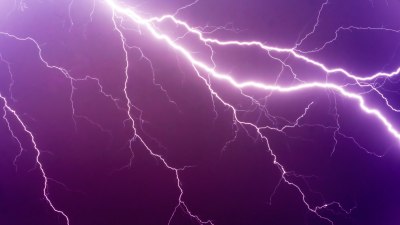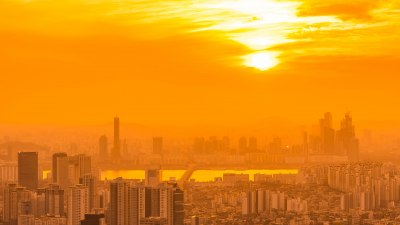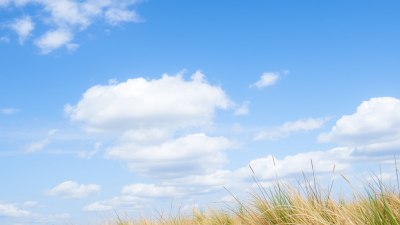What to Expect From the Season’s First Warm Front
Discover the effects, benefits, and changes brought by the first warm front of the season.

Image by arthurhidden on Freepik
As the frosty grip of winter loosens, the arrival of the season's first warm front heralds a significant change in weather patterns. A warm front refers to a boundary that forms when warm air pushes over cold air, leading to a variety of meteorological phenomena. Understanding what to expect from this shift not only prepares you for changes in temperature but also helps you anticipate associated weather conditions. In this article, we will explore the characteristics of a warm front, its impacts on local weather, the signs you can expect, and how to prepare for the changes that may accompany it.
Typically, warm fronts are associated with gradual temperature increases, cloud formation, and various types of precipitation. As the warm, moist air rises above the denser cold air, it cools and condenses, forming clouds. This process can lead to several different weather conditions, varying greatly by region and season. For instance, you may begin to notice cirrus clouds at first, which are high-altitude clouds that often indicate a changing weather pattern. As the front continues to advance, these clouds may thicken into stratus clouds or even nimbostratus clouds, which are indicative of prolonged rain.
The first warm front of the season is often a welcome change after the cold, harsh winter months. While the immediate effects may include milder temperatures, the transition can also have longer-term benefits for the ecosystem. Trees may begin to blossom, and many plants can awaken from their dormancy, heralding the arrival of spring. This change not only impacts flora but can also influence fauna as animals emerge from hibernation or modify their behavior in response to warmer conditions.
Weather Patterns Associated with Warm Fronts
As the warm air mass replaces the cold air, the resulting weather can vary. Expect the following conditions:
- Increased Cloud Cover: As the warm front approaches, clouds start to build, often making the sky look overcast. This is in stark contrast to the clear days frequently associated with cold fronts. The gradual thickening of clouds can indicate rain, so keep an eye on the sky.
- Temperature Changes: One of the most noticeable effects of a warm front is the increase in temperature. You may notice the temperatures start to rise, particularly as the warm air overtakes the cold air mass. This often leads to warmer days and a break from chilly nights.
- Precipitation: Warm fronts typically bring steady and light to moderate rain as the warm air rises and condenses. The type of precipitation you experience may vary depending on your geographic location and the time of year. For instance, early spring warm fronts may bring rain, whereas in late winter, they might bring wet snow or drizzle instead.
- Wind Shifts: Winds typically shift direction as the warm front approaches, often switching from the cold northerly winds to warmer southerly winds. This shift can be quite sudden, causing initial gusts that precede the arrival of warmer temperatures.
- Humidity Levels: Alongside rising temperatures, you may also notice an increase in humidity levels, which can lead to that uncomfortable muggy feeling in the air. Higher humidity can also result in various weather phenomena like fog, especially in the mornings.
Signs of an Approaching Warm Front
There are several signs one can look for to anticipate an approaching warm front:
- Cloud Development: One of the earliest indicators is the formation of cirrus clouds, which may progress to cumulonimbus clouds as the front draws closer. Cloud movements can be a helpful visual cue.
- Weather Changes: Sudden temperature increases and a shift in wind direction can signal that a warm front is near. Take note of changing weather patterns, as they signal the front's approach.
- Atmospheric Pressure: A drop in atmospheric pressure often precedes the arrival of a warm front, which can be observed in barometer readings. A rapid drop in pressure is often a precursor to changing weather conditions.
Impact of Warm Fronts on Local Ecosystems
Aside from immediate weather changes, warm fronts have essential roles in ecosystems. The arrival of warmer temperatures influences the timing of biological events. For example:
- Plant Growth: Many flowering plants respond to rising temperatures, which stimulate their growth cycles. This can lead to earlier blooming periods and help farmers determine when to plant crops.
- Animal Activity: As temperatures increase, many animals will begin to emerge from hibernation. Birds migrate back to warmer areas, and you may hear their calls as they return to nest. Animal behavior is significantly influenced by climatic changes.
- Soil Temperature: Warmer air temperatures can also lead to increased soil temperatures, promoting nutrient uptake in plants and enhancing growth potential throughout spring.
How to Prepare for the Season’s First Warm Front
Preparation is key to adjusting to the initial effects of a warm front:
- Check the Weather Forecast: Stay informed with local weather reports to keep abreast of any sudden changes that a warm front may bring into your area.
- Adjust Your Wardrobe: Transitioning from winter attire to lighter, breathable fabrics will be necessary as temperatures climb. Ensure your clothing choices align with the upcoming conditions to remain comfortable.
- Plan Outdoor Activities: Take advantage of the warmer temperatures while planning outdoor events. This can be a great opportunity to engage in activities like hiking, gardening, or family picnics.
- Monitor Allergies: With the arrival of warmer weather, pollen counts may increase, leading to allergy symptoms for some people. Keep medications handy and monitor local pollen forecasts if you are sensitive.
- Home Maintenance: Warm weather is an excellent time to assess home maintenance issues. Check for leaks, inspect cooling systems, and prepare your outdoor spaces for the changing seasons.
The Broader Impact of Climate Change on Warm Fronts
While warm fronts signal seasonal changes, they are influenced by broader climatic trends. Climate change is altering traditional weather patterns, including how warm fronts behave. Experts have noticed an increase in the frequency and intensity of warm fronts in many regions, leading to more extreme weather conditions. This has various implications for agriculture, infrastructure, and overall community preparedness for adverse weather.
As global temperatures rise, it is likely that warm fronts might bring heavier rainfall, increased storm systems, and more instances of flooding in certain areas. This can prompt communities to rethink their infrastructure investments, particularly in water management systems, to mitigate the risks associated with intense precipitation.
In conclusion, the season's first warm front presents a fascinating convergence of meteorological phenomena and ecological responses. While the immediate effects include warmer temperatures, increased humidity, and specific weather patterns, these changes resonate throughout local ecosystems and human activities. By understanding the implications and signs of an approaching warm front, you can be better prepared to embrace the seasonal transitions that accompany it. As you step into the warmth after the chill of winter, take a moment to appreciate the intricate connections between weather and the world around you.











